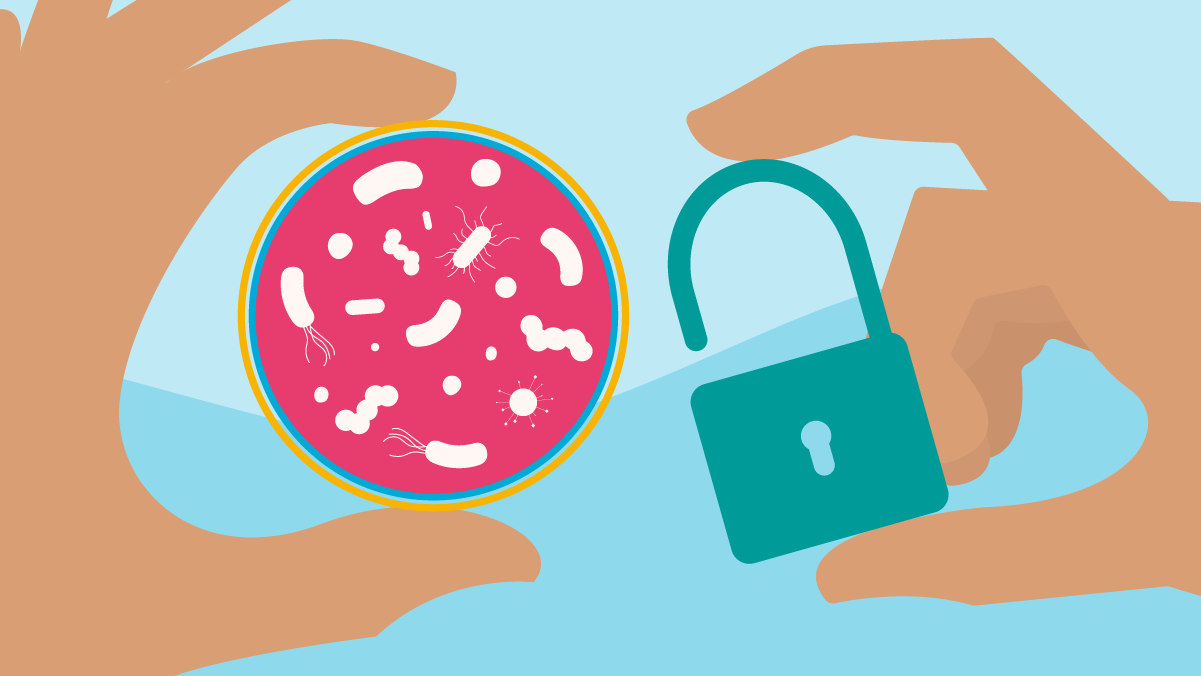Nowadays, genetic engineering is a common practice in many laboratories around the world and its benefits and risks are part of everyday public discussion. However, in the early 1970s it was a very different picture. Researchers were just starting to understand how to manipulate DNA and, even though the benefits of this new technology seemed immense, the potential health and environmental risks were still unclear.
Lingering doubts and concerns became especially relevant in 1972, after Paul Berg’s team successfully carried out the DNA cloning of the oncogenic Simian Virus 40 (SV40) along with three Escherichia coli genes responsible for the metabolism of galactose (1). Their aim was to introduce new genes into mammalian cells via SV40, which created extraordinary novel avenues for genetics. The importance of this work led Berg and some colleagues to question the risks that researchers faced while handling these transformed bacteria. Could tumoral genes of SV40 be transferred into E. coli’s genome, which naturally lives in the human digestive system? These concerns led Berg’s team to defer certain recombinant DNA experiments, until they could ensure that the risk was nonexistent.
Their action inspired the scientific community, and a voluntary moratorium was universally observed. The goal of this moratorium was to provide time for a conference to evaluate the state of the new technology and the potential hazards associated with it. That conference was held in 1975 at Asilomar Conference Center in the USA and included scientists from throughout the world, lawyers, press members and government officials (2). How did this conference shape the guidelines of recombinant DNA experiments? How does it affect the development of standards in synthetic biology?
A heated debate
During the Asilomar conference there was a considerable disagreement about the alleged risks of the recombinant DNA technology. While some experts argued that this new technology posed no risk at all, other biologists and public officials believed that recombinant DNA was flirting with disaster and that the moratorium shouldn’t be lifted (3).
A consensus was reached with the suggestion to assign a risk estimate to the different types of experiments, and to apply safety guidelines of varying stringency. In addition, regardless of the level of risk, it was recommended to use biocontainment barriers, which meant using genetically modified microorganisms that could not survive outside the laboratory (4). Participants agreed at the end of the conference that research should continue, but under the specified restrictions. The results of this conference were used to write the first guidelines aimed at research activities involving recombinant DNA and the handling of genetically modified organisms in the laboratory (5).
Keeping standards safe
Forty-six years after Asilomar, synthetic biology is starting to leave academic laboratories to penetrate industrial and environmental realms. Despite the benefits that novel synthetic biology technologies can offer, the associated biosafety questions around them have been growing as these technologies have developed. For instance, in chassis organisms, non-native components can be plugged in and out to create new functionalities. This concept lies in between bioengineering and the most traditional forms of recombinant DNA technology. The speed at which synthetic biology is evolving raises the question of whether biosafety guidelines might need to be renewed.
For instance, in bioremediation purposes, where these chassis need to survive in the soil, outside the laboratory: What type of biosafety measures should be taken then? Another example is the creation of completely novel bio-circuits. Most scientific knowledge is based on comparison, but with what shall we compare something if we don’t have a baseline? How can we acknowledge its potential risks when it is built from scratch?
The European Union has created SCENIHR, the European Commission’s Scientific Committee for Emerging and Newly Identified Health Risks, which among other tasks, also intends to respond to those questions and research recommendations for risk assessment in synthetic biology. The SCENIHR listed 5 major starting points for improvement: one, to support the characterisation of the function of biological parts and the development of computational tools to predict emergent properties of synthetic biology organisms; two, to streamline and standardise the methods for submitting genetic modification data and genetic parts information to risk assessors; three, to encourage the use of genetically modified organisms with a proven safety record as acceptable comparators for risk assessment; four, to aim to ensure that risk assessment methods advance in parallel with synthetic biology advances; and five, to support the sharing of relevant information about specific parts, devices and systems with risk assessors (6). With the aim of developing these improvements, the EU has launched SYNBIOSAFE, the first project carried out to address the ethical and safety concerns raised by Synthetic Biology.
Looking back now, the Asilomar conference marked the beginning of an exceptional era for science. It allowed the technology of recombinant DNA to emerge and become an especially relevant tool in synthetic biology. Although biosafety concerns are still keeping us on our toes, the truth is that 46 years after the Asilomar conference, no documented hazard to public health has been attributable to the applications of recombinant DNA technology. Of course, we have to stay vigilant and anticipate the future biosafety challenges that synthetic biology may bring.
References
- Jackson, D. A., Symons, R. H., & Berg, P. (1972). Biochemical Method for Inserting New Genetic Information into DNA of Simian Virus 40: Circular SV40 DNA Molecules Containing Lambda Phage Genes and the Galactose Operon of Escherichia coli. Proceedings of the National Academy of Sciences, 69(10), 2904–2909.
- The Nobel Prize in Chemistry 1980. (n.d.). NobelPrize.Org. From https://www.nobelprize.org/prizes/chemistry/1980/berg/article/
- Berg, P. (2008). Asilomar 1975: DNA modification secured. Nature, 455(7211), 290–291.
- McClean, P. (n.d.). Recombinant DNA Debate. From https://www.ndsu.edu/pubweb/~mcclean/plsc431/debate/debate3.htm
- fcoppens. (2015). Biosafety worldwide—Historical background. Belgian Biosafety Server. From https://www.biosafety.be/content/biosafety-worldwide-historical-background-1
- Ordozgoiti, E., Porcar, M., Baldwin, G., de Lorenzo, V., Ríos, L., Elfick, A., et al. Standardisation in synthetic biology: a white book. Valencia (Spain); 2021.
